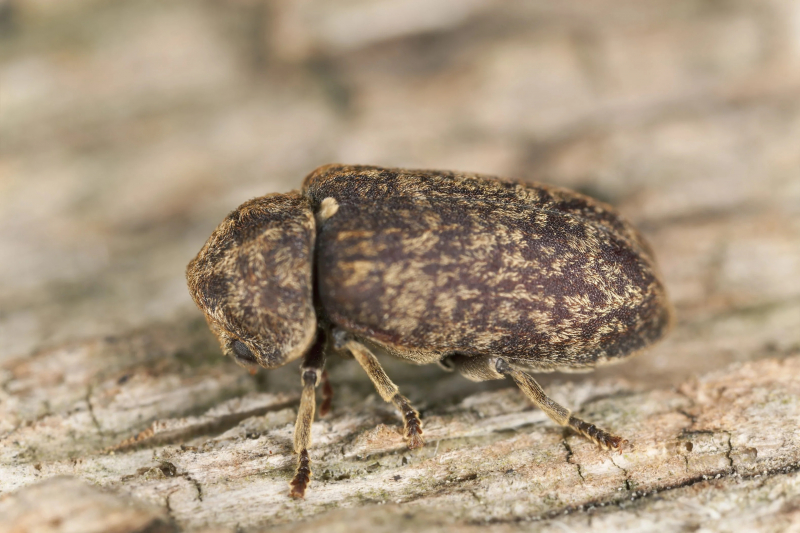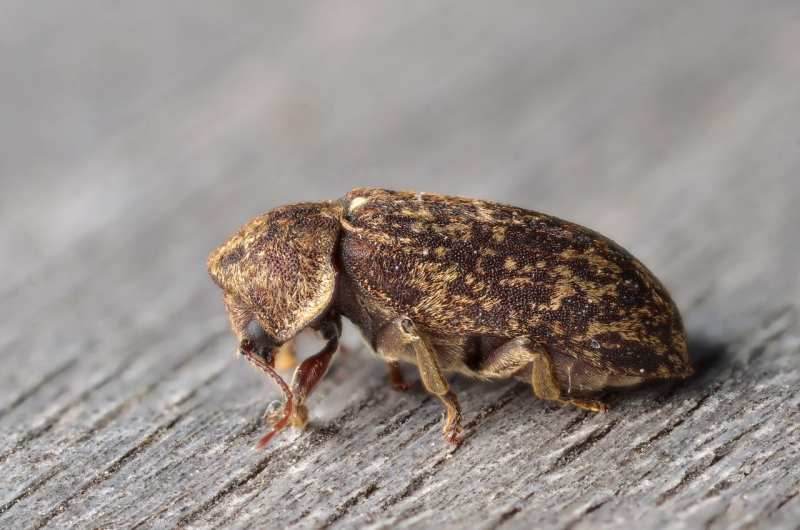Deathwatch Beetle
The deathwatch beetle is a type of wood-boring beetle that is commonly found in Europe. Its name comes from the fact that the ticking or clicking sound it makes while in the larval stage is said to resemble the ticking of a clock, which was likened to the "death watch" kept beside a dying person. This sound is made by the larvae as they bore through the wood and is a result of their mandibles clicking together.
Deathwatch beetles are small insects, usually measuring between 5-7 millimeters in length as adults. They have a cylindrical, elongated body and are dark brown to black. The larvae are white and have a characteristic "C" shape.
The deathwatch beetle's life cycle is quite long, with the larvae taking several years to mature. The larvae bore through the wood, creating tunnels and galleries as they feed. This can cause significant damage to wooden structures, including furniture, flooring, and buildings. The larvae can take up to several years to mature, and during this time they can cause extensive damage to the wood they inhabit.
In the wild, deathwatch beetles can be found in a variety of habitats, including deciduous and coniferous forests, where they feed on dead or dying trees. They are also commonly found in urban areas, where they can be a pest in buildings and other structures made of wood.
Deathwatch beetles are not considered a public health hazard, but they can cause significant damage to wooden structures. The larvae create tunnels and galleries as they feed, and this can weaken the structural integrity of the wood. The presence of deathwatch beetles can also lower the value of wooden furniture and structures.
Preventing deathwatch beetle infestations is key to protecting wooden structures. This can be done by keeping wooden structures dry, as the beetles are attracted to moist wood. It is also important to inspect wooden structures regularly, looking for signs of infestation, such as small holes in the wood or the presence of larvae or adult beetles.

















